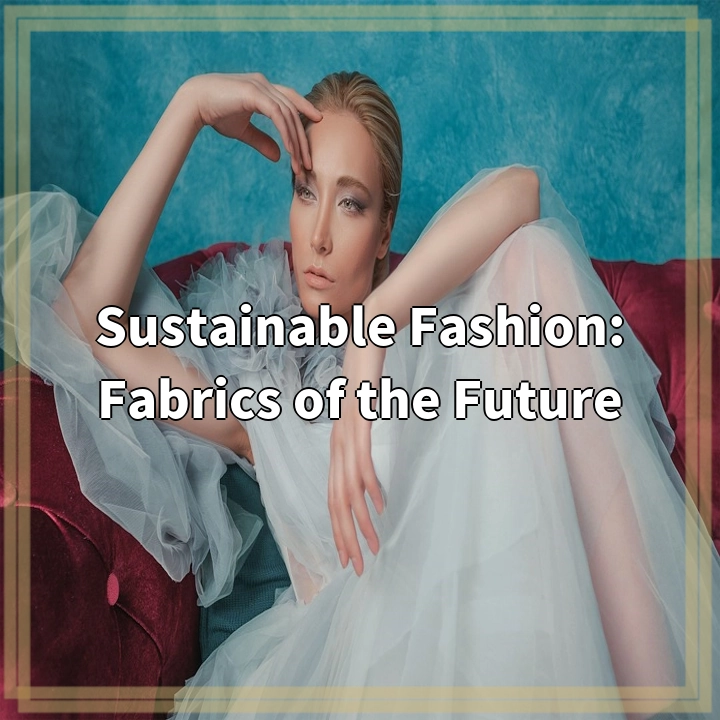
What is Sustainable Fashion: Fabrics of the Future?
Sustainable fashion is a growing movement aimed at addressing the environmental and social impacts of the fashion industry. Within this movement, a key aspect is the development and use of fabrics of the future, which are innovative and eco-friendly materials that have the potential to revolutionize the fashion industry. These fabrics are designed to minimize harm to the environment during production, use, and disposal, while also ensuring ethical and fair practices throughout the supply chain.
Real-World Problems Associated with Sustainable Fashion Fabrics
1. Resource Intensity:
One of the main challenges in sustainable fashion is the limited availability of resources required for fabric production. For instance, the cultivation and extraction of natural fibers such as cotton or silk can put a strain on land, water, and energy resources. Additionally, the manufacturing processes involved in creating synthetic materials like polyester or nylon often rely on fossil fuels and contribute to greenhouse gas emissions.
2. Chemical Usage:
Conventional textile production involves the use of a wide range of chemicals, including dyes, finishes, and treatments, which can have significant environmental impacts. These chemicals can pollute waterways, harm ecosystems, and pose health risks to both workers and consumers. Finding alternatives that minimize or eliminate the use of hazardous chemicals is essential for creating sustainable fabrics of the future.
3. Waste Generation:
The fashion industry is notorious for generating high amounts of waste, including fabric scraps, unsold garments, and discards from consumer closets. This waste often ends up in landfills or incinerators, contributing to environmental pollution and resource depletion. Developing fabrics that are fully recyclable, biodegradable, or incorporate principles of circularity can help mitigate waste issues in the fashion industry.
4. Lack of Awareness and Accessibility:
Despite the growing interest in sustainable fashion, there is still a lack of awareness and accessibility to eco-friendly fabrics among both consumers and fashion designers. Many people are not familiar with the sustainable fabric options available, and there may be limited availability or high costs associated with incorporating these materials into fashion production. Increasing awareness and making sustainable fabrics more accessible are important steps towards wider adoption and positive change.

Solutions for Sustainable Fashion Fabrics
1. Innovation in Material Development:
To address the resource intensity of fabric production, there is a need for continuous innovation in developing new and sustainable materials. This includes exploring alternatives to traditional fabrics, such as organic cotton, bamboo, hemp, or recycled fibers. Additionally, advancements in technology and research can lead to the creation of new bio-based or lab-grown fabrics, reducing the reliance on scarce resources.
2. Adoption of Clean and Green Production Processes:
To tackle the issue of chemical usage, fashion brands and manufacturers should prioritize the adoption of clean and green production processes. This involves using environmentally friendly dyes and finishing techniques, promoting the use of natural or low-impact dyes, and ensuring the safe handling and disposal of chemicals throughout the supply chain. Certification schemes like the Global Organic Textile Standard (GOTS) can help identify fabrics made with reduced chemical inputs.
3. Implementation of Circular Fashion Principles:
To address waste generation, the fashion industry needs to embrace circularity principles. This includes designing garments and fabrics for durability and longevity, enabling repair and reuse, and promoting recycling and upcycling initiatives. Fashion brands can encourage consumers to return old garments for recycling or offer take-back schemes to ensure the proper disposal and reuse of fabrics.
4. Education and Collaboration:
To increase awareness and accessibility of sustainable fabrics, education and collaboration play a crucial role. Educating consumers about the environmental impacts of the fashion industry and the benefits of choosing eco-friendly fabrics can drive demand and foster responsible consumer behavior. Collaborations between fashion designers, fabric innovators, and sustainability advocates can also lead to the development of new fabric collections and improved availability of sustainable options.















